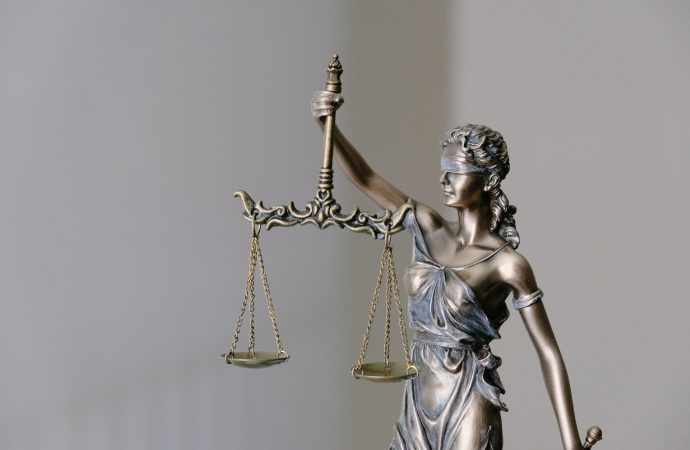Have you ever wondered how laws and regulations come into existence? How global events or societal changes shape legal landscapes over time? In this blog post, we will explore the evolution of laws and regulations that have shaped our societies. From ancient times to modern-day, we’ll take a deep dive into the dynamic nature of
Have you ever wondered how laws and regulations come into existence? How global events or societal changes shape legal landscapes over time? In this blog post, we will explore the evolution of laws and regulations that have shaped our societies. From ancient times to modern-day, we’ll take a deep dive into the dynamic nature of lawmaking and its impact on our daily lives. So buckle up and get ready for an exciting journey as we map out legal landscapes throughout history!
The U.S. Legal System
The U.S. legal system is a complex and ever-changing landscape. There are federal laws and regulations, as well as state and local laws. The Constitution is the supreme law of the land, and all other laws must align with it. Federal laws are made by Congress and signed by the President. They are enforced by the executive branch, through agencies like the Department of Justice. State laws are made by state legislatures and enforced by state courts and police forces. Local ordinances are made by city or county governments and enforced by local police forces.
The U.S. legal system has its roots in English common law, which was brought over by the colonists in the 1600s. Since then, it has evolved to become a uniquely American system. The Constitution was ratified in 1788, and since then, Congress has passed countless laws and created numerous agencies to enforce them. The judicial branch has interpreted these laws, often times making new precedents that shape the law going forward. In recent years, there have been major changes in areas like environmental regulation, civil rights, and immigration law. And with an ever-growing body of law, the landscape is constantly shifting to keep up with the times.
The History of U.S. Laws and Regulations
The United States has a long and complex history of laws and regulations. The country was founded on the principle of government by the people, and over the course of its history, the US has seen a continuous evolution in its legal landscape.
One of the earliest examples of this evolution is the Constitution itself. The founding document of the United States established a federal government with three separate branches – executive, legislative, and judicial – each with their own distinct powers and responsibilities. This system of checks and balances ensures that no one branch can exercise too much power and abuse their authority.
The Constitution also enshrined several important individual rights in the Bill of Rights, including freedom of speech, religion, and assembly. These rights have been interpreted and expanded over time by the courts to apply to more situations and protect more people.
Laws and regulations in the United States are constantly evolving to meet the needs of a changing society. New technologies, social norms, and economic conditions all necessitate new laws or amendments to existing ones. For example, laws related to transportation have had to adapt to accommodate cars, planes, trains, and other vehicles; labor laws have been updated to protect workers’ rights in an increasingly globalized economy; and environmental regulations have become stricter as we better understand the impact humans have on our planet.
The process by which laws are created or changed is also constantly evolving. In recent years, there has been an increased focus on public participation in the lawmaking process
The Future of U.S. Laws and Regulations
The United States is in the midst of a legal and regulatory revolution. The traditional model of law and regulation, which has been in place for centuries, is being challenged by new technologies, new economic realities, and changing social norms.
As we enter the 21st century, it is clear that the old legal and regulatory framework is no longer adequate to deal with the challenges of the modern world. We need a new framework that is better suited to the needs of the 21st century.
There are a number of factors that are driving this change. First, there is the rise of new technologies, such as the Internet, which are making it possible for people to communicate and collaborate in ways that were previously impossible. This has led to a more global economy, which has made it necessary for laws and regulations to be more uniform across borders.
Second, there are new economic realities. The global economy has made it necessary for companies to be able to operate in multiple jurisdictions. This has led to a need for laws and regulations that are more flexible and adaptable to changing circumstances.
Finally, there are changing social norms. The rise of social media has created a more open society, where people are less inhibited about sharing their opinions on controversial topics. This has led to calls for laws and regulations that reflect these changing social norms.
The future of U.S. laws and regulations will be shaped by these factors. We need a new legal and regulatory framework that can
Conclusion
In conclusion, understanding and mapping out the legal landscape is of paramount importance when navigating through ever-changing laws and regulations. We must stay ahead of the curve to ensure our organizations remain compliant with industry standards—and that we are aware of potential risks or pitfalls before they become costly issues. The evolution of laws and regulations can be daunting but by staying informed, we can better equip ourselves to make sound decisions as our businesses grow.























Leave a Comment
Your email address will not be published. Required fields are marked with *